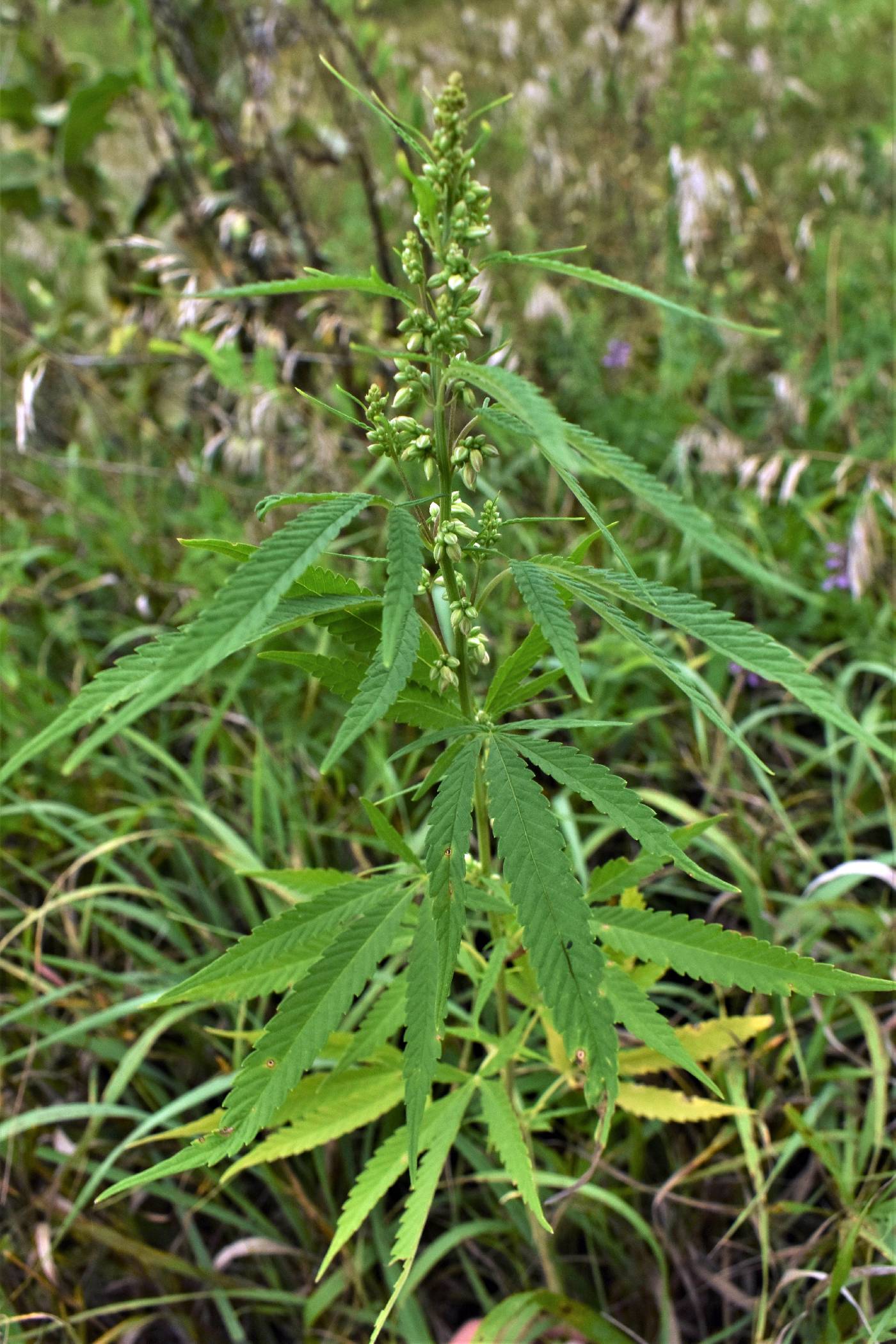
|
Family: Cannabaceae |
Herbs , annual, erect, taprooted. Stems simple to well branched, without 2-branched hairs. Leaves palmately compound; petiole not twining, without 2-branched hairs. Leaf blade: surfaces abaxially sparsely to densely pubescent. Inflorescences: staminate inflorescences compound cymes or panicles, erect; pistillate pseudospikes, congested, erect to spreading. Flowers: staminate and pistillate on different plants, sometimes on same plants, especially in cultivars. Achenes lenticular, enclosed within enlarged perianth; embryo curved. x = 10. Many populations of Cannabis sativa have been established largely from escapes from former cultivation and, sporadically, from clandestine cultivation. One of the oldest cultivated plants, hemp was widely used in Neolithic China in the Yang Shao culture (ca. 4000 B.C.). Many legends understandably surround its origins and popularity. Its tough and durable fiber, excellent for rope, cordage, paper, canvas, sailcloth, and fish nets, prompted its initial spread throughout the world. The seeds are very nutritious; they are an important constituent in birdseed mixes, and the seeds, as well as the edible oil from seeds, are marketed as an excellent food source for human consumption. Oil from the seeds was also used in paints and varnishes and as fuel for lamps (B. B. Simpson and M. Conner-Ogorzaly 1986). Hemp was a major economic crop in the American colonies because of the demand for rope in agricultural, maritime, and military pursuits. Probably best known today for its psychoactive chemicals, it is used legally by physicians in the treatment of glaucoma and to relieve nausea in cancer patients undergoing chemotherapy or radiation (B. B. Simpson and M. Conner-Ogorzaly 1986). Until 1970 marihuana was legally controlled in the United States by the Marihuana Tax Act of 1937, which levied a transfer tax for which no stamps or licenses were available to private citizens. Cannabis is now controlled by the Comprehensive Drug Abuse Act of 1970. In Canada marihuana has been controlled since 1938 by an amendment to the Narcotic Control Act (D. E. Mustol 1991). The vernacular name hemp refers both to the plant and to its commercially extracted bast fibers. Most other terms refer both to the plant and to drug preparations of it.
PLANT: Herbs, erect or scandent, annual or perennial, dioecious or monoe¬cious, usually pubescent, often with glandular, aromatic hairs. LEAVES: opposite, occasionally alternate distally, palmately compound or lobed, rarely simple and unlobed, the margins serrate. INFLORESCENCE: cymes, panicles,or spike-like, axillary or terminal, erect or pendant; staminate inflorescences loose, many-flowered; pistillate inflorescences few flowered, compact spike-like clusters. FLOWERS: small, bracteate, the petals 0; staminate flowers pedicellate, the sepals 5, the stamens 5; pistillate flowers subsessile, often paired, the sepals fused as a tube enclosing the superior ovary, the pistil 2-carpelled, 1-loculed, the style short, the stigmas 2, filiform. FRUITS: achene-like nutlets. SEEDS: 1. NOTES: 2 genera; 4 spp.; N. Temperate areas. Economically impor¬tant as source of hops (Humulus) and hemp (Cannabis). REFERENCES: Mason, Charles T., Jr. 1999. Cannabaceae. Ariz. - Nev. Acad. Sci. 32(1). Ordinarily dioecious; pistillate fls in small clusters on short, leafy branches from the upper axils, each fl semi-enclosed by a closely subtending, abruptly acuminate bract; cal short and barely lobed, or sometimes longer but hyaline and becoming adnate to the pericarp; fr a thick-lenticular achene, with a closely subtending accrescent bract; erect annual herbs; lvs petiolate, the principal ones palmately compound with 5-9 lfls, commonly opposite, the upper smaller, usually alternate, with fewer lfls or undivided. Monospecific. Gleason, Henry A. & Cronquist, Arthur J. 1991. Manual of vascular plants of northeastern United States and adjacent Canada. lxxv + 910 pp. ©The New York Botanical Garden. All rights reserved. Used by permission. |
This project was made possible in part by the Institute of Museum and Library Services [MG-70-19-0057-19].
Powered by Symbiota



